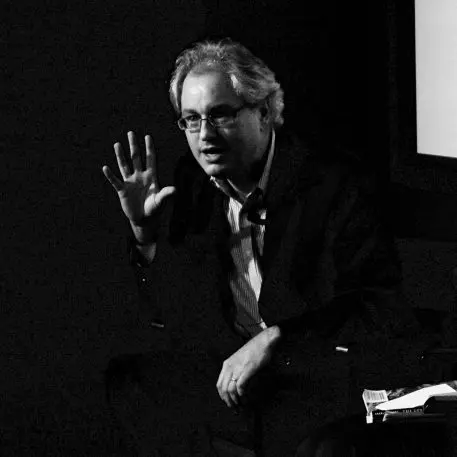The COVID-19 pandemic has woken us up to the way viruses attack and spread through cities, but the reality is that infectious diseases have long ravaged cities and urban areas. Charles Kenny has thought a lot about the connection between cities and disease. A senior fellow at the Center for Global Development and former World Bank economist, Kenny is the author of several books including The War on Death and The Upside of Down: Why the Rise of the Rest is Good for the West. He recently tweeted about his latest book, Winning the War on Death: Humanity, Infection and the Fight for the Modern World, currently undergoing peer review at the University of California Press. I contacted him about it, and he sent me the manuscript, which is timely and fascinating. I spoke to him about the history of cities and infectious disease and his main takeaways about how the current COVID-19 crisis will affect cities today.

Charles Kenny: I’d say cities have definitely had the upper hand in the last century or two, but prior to that infection usually outpaced innovation. The sanitary innovations that mattered for health had mostly been “discovered” by the time of ancient Rome (water, sewers, trash collection, density limits) while the medical innovations largely didn’t arrive until the late 19th century and after. The sanitary innovations alone (at least to the extent they could be implemented by city governments at the time) weren’t enough to make city populations sustainable without influxes of fresh people from hinterlands.
RF: Have cities declined or fallen over time due to infectious disease?
CK: Some cities arguably “fell” directly because of a pandemic—Athens, weakened by plague, lost the Peloponnesian War against Sparta, for example. The Aztec capital Tenochtitlan collapsed under the weight of old-world diseases to about a tenth of its size during the early days of Mexico City (as it was renamed by conquistadors). Cities also declined because they weren’t replacing people as empires fell—Rome’s population collapsed tenfold or more between the height of the Empire and the Dark Ages. That’s about more than infection, but disease played a role in keeping city populations below replacement levels and also significantly weakening the empire as a whole—the story is laid out in Kyle Harper’s fantastic book The Fate of Rome.
RF: How has infectious disease shaped and reshaped our cities? To me it seems like a very big factor in this, alongside threats from outside attack.
CK: Beyond the considerable architectural feats of water and sewage systems—Bazalgette’s sewers were an engineering marvel and also created the London Embankment and made space for the Circle Line Tube—infection helped decide what were the expensive bits of cities to live in (the hills, as a rule—further from marshes and mosquitoes). And the fight against infection led to a whole raft of legislation around industry (“noxious trades”) and housing density and quality.
RF: One thing you point out is that medical advances in the past century or half-century have helped to spur urbanization. Tell me more about this. Would we have seen such incredible urbanization without these advances? How might the world be different today without them?
CK: Absent sanitary and medical innovation, cities are death traps. Some of the lowest life expectancies ever recorded were in the expanding industrial towns of England at the start of the 19th century. You simply cannot sustain widespread urbanization under those circumstances. Sanitation helps a lot—but it is expensive and requires some serious governance capacity. The thing about vaccines and antibiotics as well as bed nets to keep out mosquitoes and oral rehydration therapies of sugar and salt to treat diarrhea is they are cheap and comparatively easy to use. And they are used even in a lot of cities and slums worldwide that lack decent sanitation and water. The medical revolution of the last 150 years has fostered urbanization in the rich world but in particular massively accelerated it in developing countries. Pretty much worldwide, urban life expectancy is higher than rural life expectancy—a complete reverse from 200 years ago.
RF: What do you think will be the outcome of the current pandemic? Which places, which parts of the world will be hit hardest, and why?
CK: I’m not an epidemiologist. But I will say that while many developing countries have lower numbers of old people who appear most at risk of the disease, these countries are also the least able to afford social distancing and have hardly any intensive care capacity. And while economic downturns can actually be good for health in rich countries, because people tend to eat more healthily, for example, the reverse is true in poorer countries. What I can say with certainty is that this pandemic has demonstrated how much more costly it is to react late and separately rather than together and collectively to a new infectious threat. We need far more global cooperation to support pandemic surveillance and response as well as research and rollout of tests, treatments, and vaccines.
RF: To what degree will the current pandemic affect urbanization today? Will it slow it down? Impede it? Will it affect large global superstar cities like New York, London, Tokyo, Shanghai, Beijing, Hong Kong? How might the current pandemic affect the shape and design of our cities? Will it spur a “flight from density” back to suburbs or rural areas? Will the way we design cities change?
CK: I hope it won’t slow down urbanization. I think social distancing is helping to demonstrate how valuable social connection is to people’s quality of life. But if it makes us all a bit more aware that global cities need global pandemic preparedness to remain safe, that would be good.
RF: You mention that these pandemics seem to be accelerating. This seems like a once-in-a-century pandemic. But is it? Do we need to be prepared for more such diseases?
CK: The combination of larger concentrations of people in cities, much larger concentrations of animals on factory farms, and the continued rise of global travel—as well as the range of recent outbreaks like Severe Acute Respiratory Syndrome, avian influenza, Nipah virus, Hendra virus, Ebola, Marburg fever, Lassa fever, and Zika—suggests we should be prepared.
RF: Why do we seem to forget the wrath of pandemics over time? Honestly, I never thought about these things. I completely forgot not just about 1918. I was born in the middle of the 1957 pandemic. My parents never even mentioned it.
CK: We’re better at remembering concentrated tragedies, perhaps? We don’t think about car accidents nearly as much as plane crashes even though the car accidents are far more deadly. We can’t memorialize a few deaths in each of 10,000 hospitals as much as we can 10,000 deaths on a single battlefield. I’d add that infectious deaths more broadly have gone from being a way of life to a pretty rare tragedy in rich countries—there was no point in memorializing the inevitable commonplace back then, and today, thankfully, most of the time there is little to memorialize.
Recognize your brand’s excellence by applying to this year’s Brands That Matter Awards before the early-rate deadline, May 3.
